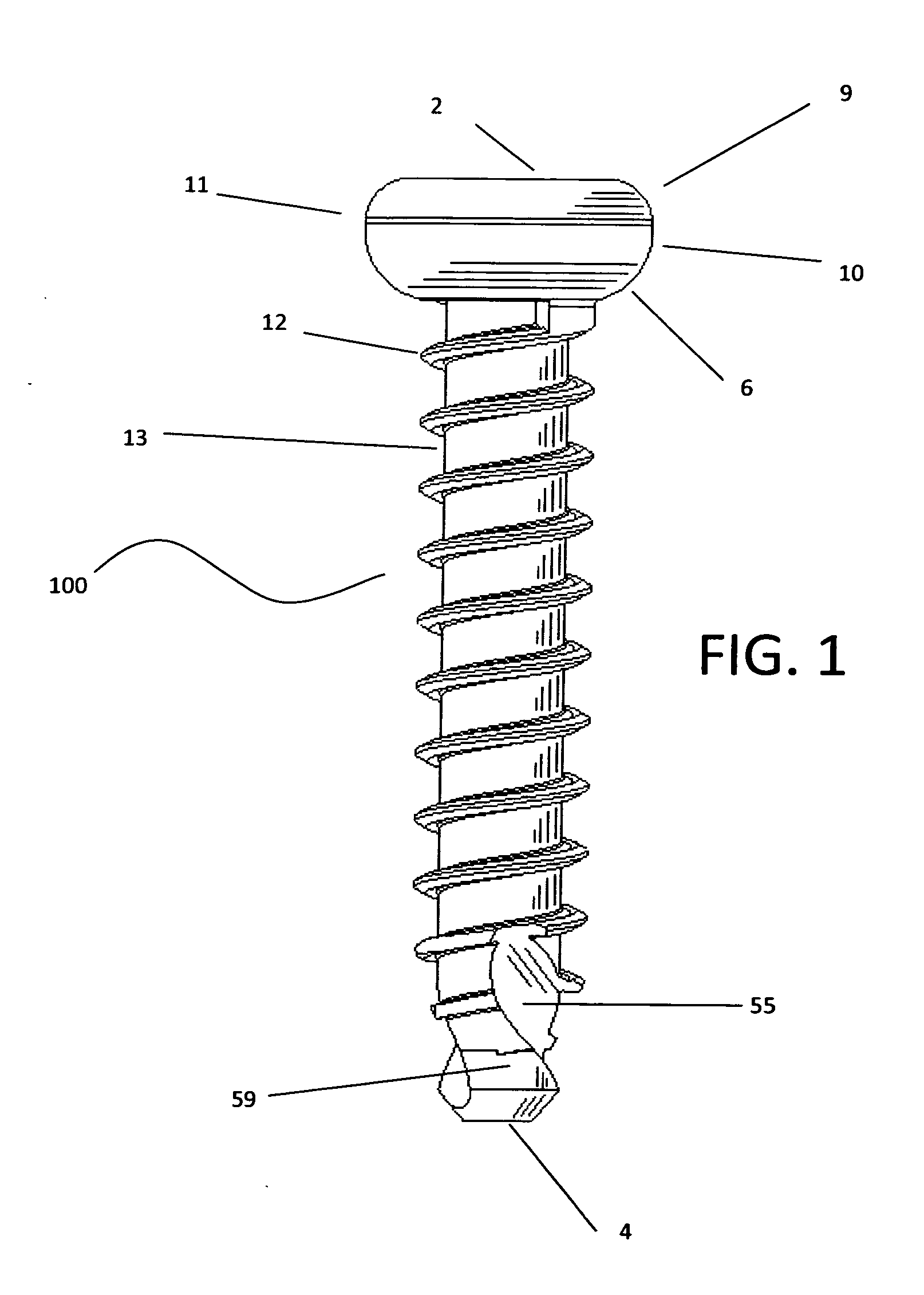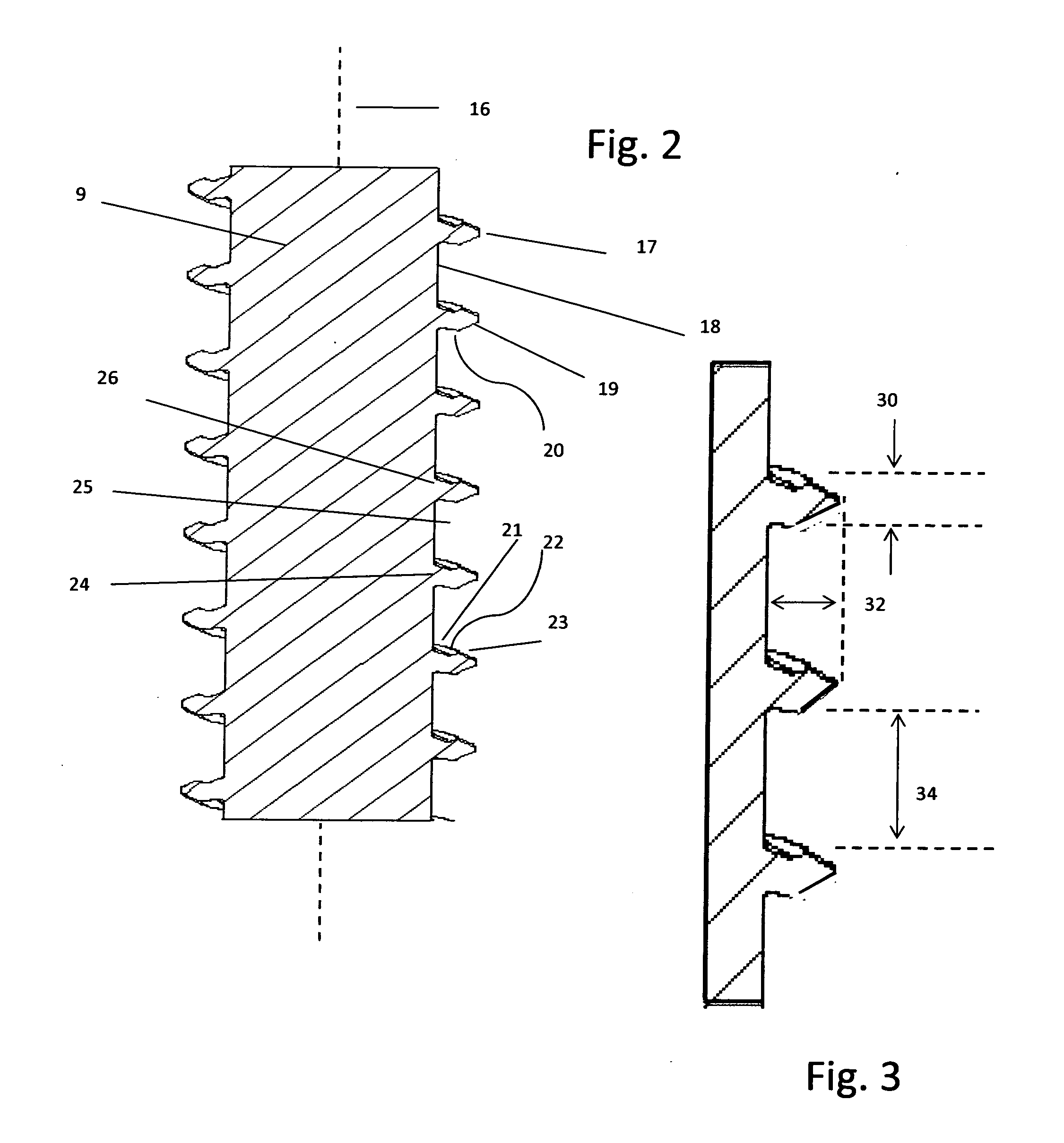Surgical procedures involving fasteners on skeletal structure presently suffer from several common frailties.
One is the inability to accurately orient the fastener during insertion to keep the fastener from wandering.
Even with a predrilled
pilot hole, fasteners still frequently
skew off the axis of the
pilot hole, making it difficult to register the fastener at its distal end with another instrumentality.
Another frailty is the failure to provide a reliable thread portion that engages the bone of the patient in a manner which retards its working loose.
Unfortunately,
buttress threads are suitable for use only where load forces on the fastener are applied in one direction.
Where the load forces are multidirectional or not unidirectional and axial, failure can occur.
One manifestation of
buttress thread failure is “toggling” where the fastener works on the bone and enlarges the hole within which the fastener resides.
Yet another frailty related to high insert torque makes it impossible to insert the screw through bone fragments without it grabbing the fragment and causing it to rotate with the screw causing significant trauma to soft tissues and a failed fixation of the fragment.
Increased friction leads to elevated temperatures during insertion, potentially damaging
bone tissue.
A temperature excursion greater than 116 degrees Fahrenheit (47 degrees Celsius) at the
insertion site causes osteonecrosis which cannot be repaired and which the body cannot heal.
And, even worse,
excess heat compromises the fastener's ability to remain in place since the bone has died at the
screw thread interface.
As a consequence, some procedures rely on liquid cooling at the site during the drilling /
insertion procedure, but, even then, the process generates so much heat that the heat generating tool can be too hot to touch because the liquid cooling is merely topical.
Since the only variables (thread
pitch, crest and root diameters) in the
buttress thread design are interrelated, improving retention increases friction and insertion torque, resulting in
heat generation and impairing the surgeon's ability to feel the insertion torque of the fastener in a meaningful way.
This still leaves the fundamental problem of the thread's inability to withstand multidirectional forces unaddressed, while creating several new problems.
The buttress fastener is harder to start and is prone to stripping, especially when used in conjunction with a plate.
The buttress thread induces a radial force, perpendicular to the fastener's
long axis, which increases the probability the bone will split or crack, making a procedure much more difficult, if not impossible.
The buttress
threaded fastener can wander during insertion, making its registry with an instrumentality at the distal end of the fastener a recurring problem.
Wandering away from the
pilot hole often results in
cutting new threads in an unintended location or stripping out the
pilot hole which retards healing and actually induces trauma; and, where there is a temperature excursion above 116 degrees Fahrenheit, it can also cause osteonecrosis of the adjacent bone.
This bone debris accumulates along the thread teeth and increases insertion torque and friction which therefore generate additional heat.
The debris also makes the fastener harder to insert and provides a poor interface with the bone and the fastener.
Another problem associated with buttress style threads is that the area between threads of the fastener is the only site of anchoring in the bone, and because of the design constraints associated therewith, this site is difficult to optimize.
Stated alternatively, the
metal of the fastener is orders of magnitude stronger than the retaining bone so that when failure occurs, it always involves bone trauma.
 Login to View More
Login to View More  Login to View More
Login to View More 


